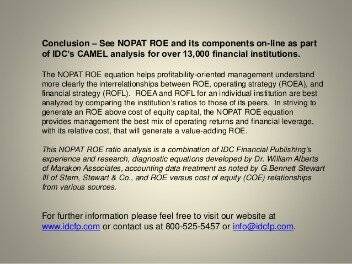Content

A total of $560 million in selling and operating expenses, and $293 million in general and administrative expenses, were subtracted from that profit, leaving an operating income of $765 million. To this, additional gains were added and losses were subtracted, including $257 million in income tax. However, real-world companies often operate on a global scale, have diversified business segments offering a mix of products and services, and frequently get involved in mergers, acquisitions, and strategic partnerships. Such a wide array of operations, diversified set of expenses, various business activities, and the need for reporting in a standard format per regulatory compliance leads to multiple and complex accounting entries in the income statement. With income statement data, you can evaluate factors such as your profitability and ability to manage your expenses.

So, to Income Statement statement, you will first need to generate the trial balance report. The next format used for preparing an income statement is the multi-step income statement format. As the name suggests, a number of subtractions must be undertaken to calculate the net income. In this article, we’ll define what an income statement is, how to prepare an income statement, the uses of income statements, and how to read an income statement. This statement records revenues, expenses, gains, and losses according to this standard format.
To Know Capacity to Generate Operating Income
Each investor needs to review an investment strategy for his or her own particular situation before making any investment decision. If, for example, the analyst expected that growth rate to persist throughout the forecast period, revenue would simply be grown at that rate. Level up your career with the world’s most recognized private equity investing program. Other income is broken out to explicitly show interest expense and interest income. If a company has a simple capital structure (i.e., one with no potentially dilutive securities), then its basic EPS is equal to its diluted EPS. If, however, a company has dilutive securities, its diluted EPS is lower than its basic EPS.
- This guide will give you a comprehensive overview of both financial statements.
- Balance sheets and income statements are invaluable tools for business owners to measure their company’s performance and prospects, but they differ in key ways.
- This is because things such as tax deductions vary from year to year and can impact business earnings, thus not giving a true and fair view of the profitability of your business.
- By showing how a company has managed the inflow and outflow of cash, the statement of cash flows may paint a more complete picture of a company’s liquidity than the income statement or the balance sheet.
- Ultimately, horizontal analysis is used to identify trends over time—comparisons from Q1 to Q2, for example—instead of revealing how individual line items relate to others.
Financial StatementFinancial statements are written reports prepared by a company’s management to present the company’s financial affairs over a given period . Common size income statements include an additional column of data summarizing each line item as a percentage of your total revenue. A single-step income statement, on the other hand, is a little more straightforward. It adds up your total revenue then subtracts your total expenses to get your net income. Small businesses typically start producing income statements when a bank or investor wants to review the financial performance of their business to see how profitable they are. “Bottom line” is the net income that is calculated after subtracting the expenses from revenue.
Net Income
Recognition of revenue when earned is a fundamental principal of accrual accounting. Describe other comprehensive income and identify major types of items included in it. FreshBooks provides an easy-to-follow accounting formula to make sure that you’re calculating the right amounts and creating an accurate income statement. No items may be presented in the statement of comprehensive income or in the notes as extraordinary items. While these drivers are commonly used, they are just general guidelines.
- The information provided here is for general informational purposes only and should not be considered an individualized recommendation or personalized investment advice.
- Otherwise, relying on the net sales line on the income statement is sufficient.
- Operating profit is the total earnings from a company’s core business operations, excluding deductions of interest and tax.
- Regularly review and update all of your financial statements to keep a close eye on your operation.
- Get the relevant final figures of various expenses, stock, income, etc., from the Trial Balance.
In the case of the federal government, it refers to the total amount of income generated from taxes, which remains unfiltered from any deductions. Depreciation is the process of deducting the total cost of something expensive purchased for your business. However, instead of doing it all in one tax year, you write off parts of it over time.
Financial Statements to Measure a Company’s Strength
Conceptually, the income statement is very straightforward, but it does use specific terminology that needs to be clarified. Start with gross revenue, the total amount of revenue derived from sales of products or services. Subtract the cost of sales or cost of goods sold , expenses directly related to producing the company’s product or service (e.g., raw materials or the labor involved). Smart business owners use income statements alongside other key financial documents, like the balance sheet and cash flow statement, to check up on and improve the health of their businesses.
The income statement presents information on the financial results of a company’s business activities over a period of time. The income statement communicates how much revenue the company generated during a period and what costs it incurred in connection with generating that revenue. The basic equation underlying the income statement, ignoring gains and losses, is Revenue minus Expenses equals Net income. A company’s net income and its components (e.g., gross margin, operating earnings, and pretax earnings) are critical inputs into both the equity and credit analysis processes. Equity analysts are interested in earnings because equity markets often reward relatively high- or low-earnings growth companies with above-average or below-average valuations, respectively.
Shareholders’ equity includes common stock, additional paid-in capital, and retained earnings. The income statement is read from top to bottom, starting with revenues, sometimes called the “top line.” Expenses and costs are subtracted, followed by taxes. The end result is the company’s net income—or profit—before paying any dividends. In addition to this, there are various sections in the income statement that can help the users of such a statement understand how revenue generated from sales is transformed into net income or a net loss. For instance, the gross profit helps the management to set the retail price of a product or service, considering the prices offered by competitors.
- As the name suggests, a number of subtractions must be undertaken to calculate the net income.
- Other income is broken out to explicitly show interest expense and interest income.
- Notes to the financial statements refers the reader to important information that could not be communicated by the amounts shown on the face of the income statement.
- A balance sheet gives a point in time view of a company’s assets and liabilities, while the income statement details income and expenses over an extended period of time .
- More than one company, especially young and growing ones, have looked like superstars on their income statements, but have been forced to cease operations for lack of cash.
Since this forms the last line of the income statement, it is informally called “bottom line.” It is important to investors as it represents the profit for the year attributable to the shareholders. It indicates how the revenues (also known as the “top line”) are transformed into the net income or net profit . The purpose of the income statement is to show managers and investors whether the company made money or lost money during the period being reported.
What’s included in a balance sheet?
This may include interest and other earning from investments, donations and gains or losses from the sale of assets. In simple terms, owner’s or shareholder’s equity is equal to the total assets attributable to owners or shareholders in the event of the company’s liquidation, after paying all debts or liabilities. A profitability framework helps you assess the profitability of any company within a few minutes.
